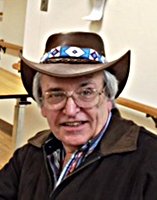
Alan B. Crawford
By Alan B. Crawford
One of the major industries of this area, in years past, was brick making. One of the most well-known was the Rose Brick Yard, in Roseton. But there were many others. Some people actually collect bricks, striving to have one, well preserved example from each manufacturer.
Interestingly, the homeowner of the old South Plank Road Half Way House, has uncovered some bricks used as pavers, on the pathway beneath the front porch. They proudly display the name DAVIDSON. The facility is long gone, but their name lives on. So, exactly who was this?
The patriarch, and founder of H. Davidson & Sons brickyard was Hugh Davidson, Sr. Both Hugh Sr., and his father, William, were from Ireland, originally settling in Craigsville.
Hugh Davidson, Sr. learned the boiler maker trade and for a time worked at the Washington Iron Works. He had ventured south, plying his trade in Virginia, building two plants, and working at them as superintendent, owned by James Bigler. At the onset of the Civil War, he returned north and was employed by brick yards in Haverstraw. Subsequently, he purchased a plant in New Windsor, about 1871.
The plant was rather unique for the time and was covered. What this meant was that bricks could be produced, regardless of the weather. It covered approximately 30 acres along the Hudson River. The plant had three machines, each capable of producing approximately 35,000 bricks a day.
The plant was powered by a 45 horsepower and employed about 35 people. Interestingly, the land where the plant was located, was previously used as an encampment for the Thirty Sixth New York Infantry, before they were sent to the front.
The primary means of shipping in those days were either water, or rail. This plant had both options. Wood was brought in by rail to power the kilns, about 800 rail cars a year! And, foresight located the kilns on the banks of the river, such that at high tide, the barges could come directly up to the sides of the kilns to be loaded. The brand was known as the River Hard Brick and shipped on the Hudson River by these barges to New York City and other points south.
Now here’s something to think about. The barges were specially constructed to transport bricks. The capacity? 350,000 bricks or 700 tons! They were towed to New York City by tug boats. In 1907, the average output per each brickyard was 8,622,000! Our area was crucial in the building of New York City and other urban centers.
Hugh Davidson, Jr. was born December 17, 1859, in Newburgh to Hugh E. Davidson and Mariah Maria Barber. Miss Barber was from Steuben County. Growing up with his brothers, in his boyhood, Hugh Jr. took an interest in running the engines for his father, continuing to do so until his father passed away in 1891. In 1892, he married Anna Bell Armstrong.
Besides the brickyard, Mr. Davidson took an active role in local politics and government, being named as a delegate to a number of county and Congressional Conventions of the Republican Party. He also served three terms as Road Commissioner building three or four new roads and making improvements to many more.
One thing goes without question. The making of bricks was very labor intensive. This work was not for the weak. You would develop muscle and sinew the more you worked. And work you did! This endeavor was not an eight hour day shift. Days could drag on into twelve and fourteen hours.
The material, clay, used to make bricks was abundant in the Hudson Valley. Thus, the proliferation of so many plants. These plants, I guess you would say, were the beginning of the industrial revolution, drawing more people from the farms into the labor pool. And, so began the decline of farming in our Town.
Why did the brickyards decline? As always, simply change and improvement. By their nature, bricks are heavy. A great building material, but heavy. This factor impacts how they can be shipped. Improvements in other building materials led to bricks being replaced by less expensive, but structurally equal building components. The only things which never changes is change.